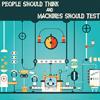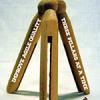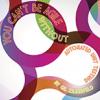Automation
Better Software Magazine Articles
 |
People Should Think and Machines Should Test Testers often develop programmatic tests that mimic manual test conditions. Harry Robinson and Doug Szabo use real programming examples to show how the computer can provide better test coverage than the test author conceived. |
|
 |
Moving Teams toward Automation: Perils, Pitfalls, and Promise There is no magic bullet to create an effective test automation environment. But Steve Gibson believes that creating a test automation vision, adopting metrics, and delivering value throughout a project lifecycle puts an organization on the right path. |
|
 |
Improve Agile Quality—Three Pillars at a Time A key component to being agile is the adoption of testing from the very inception of the project. According to Bob Galen, to achieve a high degree of quality assurance, there needs to be a careful balance among development and test automation, software testing, and cross-functional team practices. |
|
|
|
Applying Test-Driven Development to Agile Test-driven development (TDD) is fundamental to agile, but to most of us caught up in projects, there's never enough time to commit to it. Erick Fleming shows how to use TDD to improve product quality and time to delivery. |
|
|
|
Understanding Test Automation Patterns Automated testing is vital for every software development organization's quality assurance activities. Dorothy Graham and Seretta Gamba demonstrate how to classify issues that occur during test automation. The authors maintain that certain test results have root causes that can be categorized as patterns that require specific mitigation strategies. |
|
|
|
What Are the Key Components of an Effective Test Strategy? In this FAQ column, Lee Copeland defines a test strategy as a high-level plan to achieve specific test objectives and outlines the components an effective strategy should address. |
|
 |
The Lean Test Canvas Taking lessons from the lean business model, Matt Heusser explains how a tester can present different values and properly set expectations with the team using the lean test canvas. His approach starts with defining who the customer is and ends with key qualitative measures that will be used to ensure success. |
|
|
|
How to Design a Test Strategy Speaking from his experience with test-centered design projects, Jon Hagar explores some testing pitfalls that could have been avoided if the right test strategy had been chosen. You won't find a better, easier-to-understand explanation of a practical test strategy. |
|
 |
Leveraging Automated Testing to Improve Product Quality Improving product quality is often a very difficult task for even the best software development organizations. Rajini says the additional benefits of automation include benchmarking, code scanning analysis, end-to-end test cases, and compatibility validation. |
|
 |
You Can't Be Agile without Automated Unit Testing Agile projects assume that test planning, test creation, and test execution take place throughout a project's lifecycle. So the need for unit testing (and especially automated unit testing) can't be ignored and should be considered as a key responsibility of the entire team—not just the software developers. |












